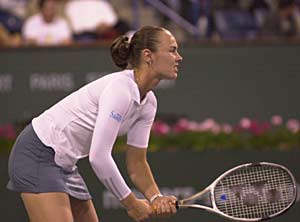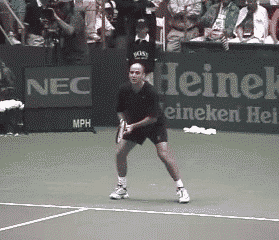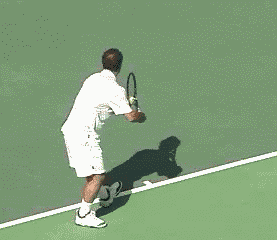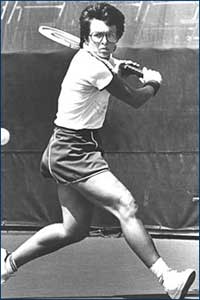|
TennisOne Lessons Should You Elect to Serve or Receive? Paul Fein “OK, do you want to get broken first, or do you want to let me hold?” —What cheeky world No. 1 Martina Hingis quipped at the coin toss before a 1997 match against Lindsay Davenport.
During the marathon deciding set of Fernando Gonzalez’s 6-4, 2-6, 16-14 bronze medal victory over Taylor Dent at the Athens Olympics, former world No. 1 Jim Courier, one of tennis’ most astute TV analysts, said he “would love to know why anyone would not want to serve first to start a set.” Courier pointed out two big advantages of serving first: holding serve for 5-4 and 6-5 leads then forces opponents to hold serve or lose the set—and losing one’s service game and falling behind 5-4 and 6-5 still provides a chance to break the opponent’s serve in the next game to tie the score. Pete Sampras, considered by many the all-time greatest player, could not agree more. “I always decided to serve first because I felt it set the tone early on and gave you a game lead. It was also good mentally to serve first in the tiebreaker and get an early advantage.” Andre Agassi, renowned for his terrific service returns, has a different philosophy. At the 2005 U.S. Open, Agassi elected to receive serve in the opening game of his semifinal against Robby Ginepri and again in the final against Roger Federer. That surprised some observers, but those decisions were quite logical.
Here are some reasons to consider choosing return of serve to start a match.
Finally, consider the cogent comments of 39-time Grand Slam champion Billie Jean King. “I almost always served first, probably 85 percent of the time. In my day—especially when we had so many matches on grass—it was better that way. “Today I would receive much, much more,” says King, former U.S. Fed Cup captain. “The equipment has changed so much that in many situations there are advantages to receiving and trying to get an early break. Also, surface plays a very important role in today’s game. Given those two elements, I would have to evaluate the serve/receive choice more carefully before the match.” Do one or more of these offsetting factors outweigh the disadvantages of serving from one game behind in the opening set? It’s your call.
Your comments are welcome. Let us know what you think about Paul Fein's article by emailing us here at TennisOne.
Award-winning tennis writer Paul Fein's book, Tennis Confidential: Today's Greatest Players, Matches, and Controversies , published by Brassey's, Inc., was listed No. 1 among tennis books by Amazon.com and BN.com. Information about the book and how to order it can be found at: www.tennisconfidential.com . His second book, You Can Quote Me on That: Greatest Tennis Quips, Insights, and Zingers , was published by Potomac Books, Inc. (formerly Brassey's, Inc.) in February 2005. For more information, visit www.tennisquotes.com |




